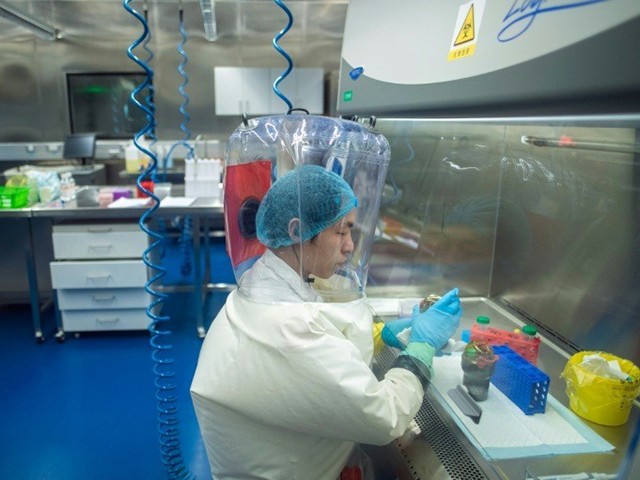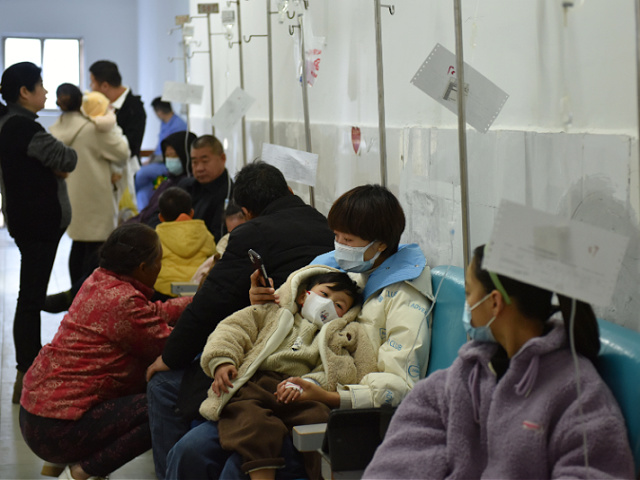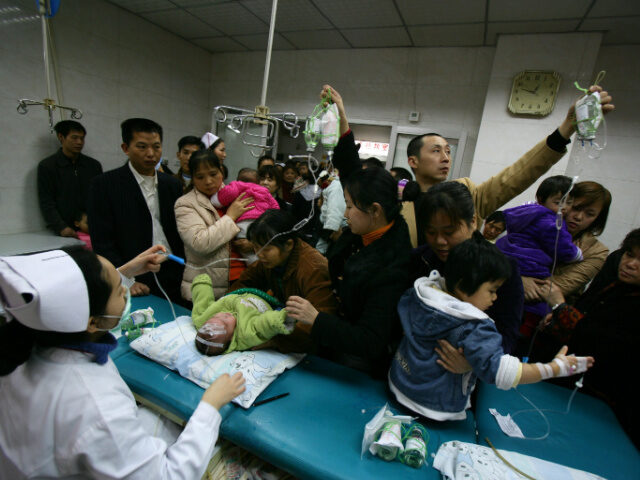China’s outbreak of pediatric respiratory disease marches on, spreading far wider and lasting longer than Communist Party health officials anticipated.
On Tuesday, Bloomberg News quoted Western experts who said China’s over-reliance on antibiotics to treat mild infections is one reason for the surge because heavy use of the drugs, combined with brutal Wuhan coronavirus lockdowns, has weakened the immune systems of Chinese children.
“The situation in China highlights the global challenge. The W.H.O. [World Health Organization] warned for years that overuse of antibiotics made some of the most common bacteria less responsive to existing drugs, calling it a silent epidemic,” Bloomberg noted.
Antibiotic resistance can be dangerous, even deadly. W.H.O. attributed almost five million deaths around the world to drug-resistant illness in the last year before the Wuhan coronavirus outbreak.
The problem is particularly acute in China, where antibiotics are readily available and doctors have a tendency to prescribe them even for viral infections completely unaffected by antibiotic drugs.
Antibiotics are also frequently used to speed recovery from illnesses that children would have defeated on their own. As UCLA epidemiologist Zuo-Feng Zhang pointed out, few American children receive intravenous drips of antibiotics for simple flu-season illnesses, but many Chinese children do.
Chinese health officials insist the current outbreak does not involve a novel pathogen such as the Wuhan coronavirus, and outside observers have generally concurred. The culprit is reportedly mycoplasma pneumonia, which is a persistent threat during the winter cold season but does not usually produce so many severe infections among China’s children.

Inside the P4 laboratory in Wuhan: The Chinese biosafety laboratory was accused by senior US officials of being at the origin of the coronavirus pandemic (Picture taken in 2017 – Johannes EISELE/AFP).
Experts suggested that the problem could be that China usually wallops pneumonia with heavy usage of antibiotics, but this year, a stronger, tougher round of bacterial infections with enhanced resistance to drugs is attacking a population whose immune systems were greatly weakened by dictator Xi Jinping’s ghastly coronavirus lockdowns, creating a perfect storm of disease.
Chinese parents were unpleasantly surprised when the usual antibiotic prescriptions were ineffective. Some of the infected children are severely ill, and even heavy doses of antibiotic drugs are not helping them recover.

Sick children, accompanied by their parents, receive infusion treatment at the Department of Pediatrics of the People’s Hospital in Fuyang City, Anhui Province, China, November 28, 2023 (CFOTO/Future Publishing via Getty Images).
Nature noted in November that other countries have experienced worse-than-normal cold and flu seasons after coronavirus lockdowns ended, but those surges were far less severe than China’s, and they tended to involve influenza and respiratory syncytial virus (RSV), while China has experienced an anomalous surge of pneumonia cases.
Bacterial pneumonia, an infection that attacks the lungs, is much more dangerous than the flu or RSV. It is unusual for pneumonia to spread so aggressively on its own because it is normally regarded as an “opportunistic” illness that hits victims who have already been weakened by viral infections.
Nature’s November piece suggested China’s “overreliance” on antibiotics might have “led to the pathogen developing resistance,” a theory that has become more widely accepted – outside of China, at least – over the past few weeks.
Chinese health officials claimed on Sunday that they have observed a “fluctuating downtrend” in childhood respiratory illnesses over the past few days, with a corresponding reduction in the heavy caseload at hospitals nationwide.
Also on Sunday, China’s National Disease Control and Prevention Administration (CDC) recommended more widespread use of sanitary masks for people experiencing symptoms of pneumonia, influenza, RSV, or Wuhan coronavirus. Masking was made mandatory for medical offices and “vulnerable locations such as nursing homes, social welfare institutions, and childcare facilities.”
Symptomatic individuals were advised to wear N95 masks or similar medical-grade protection, while those without symptoms were told to use common disposable masks.

COMMENTS
Please let us know if you're having issues with commenting.